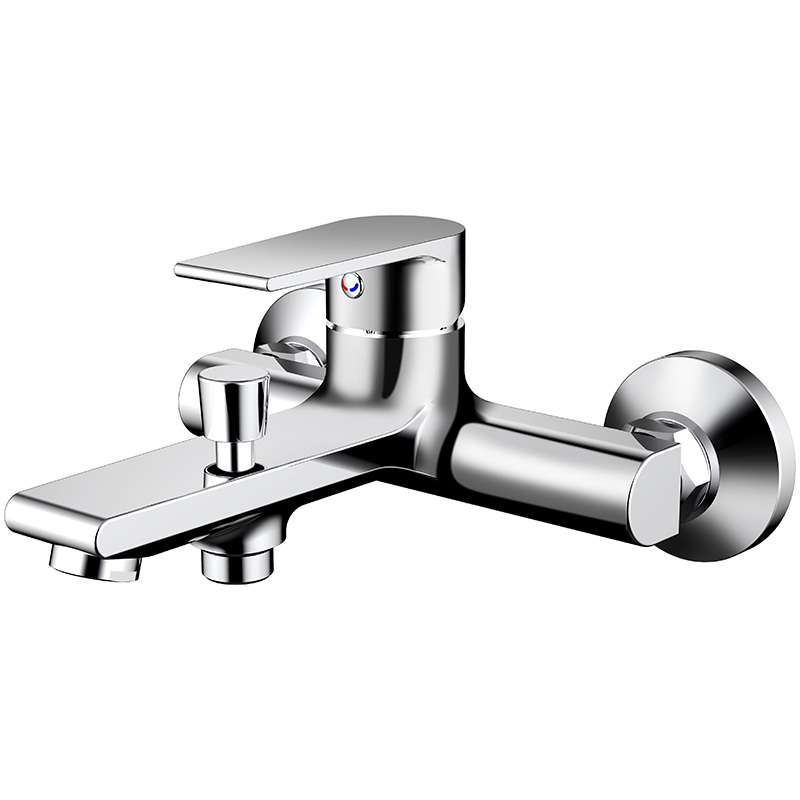How To Stop A Bathtub Faucet From Leaking
A leaking bathtub faucet is not just an inconvenience — it can waste hundreds of liters of water per month, increase utility costs, and cause long-term damage to fixtures and surfaces. Fortunately, fixing a leaking faucet is a simple process when you understand the cause and use the right tools. Whether your faucet uses a single handle, dual handles, or a built-in diverter, this guide explains how to stop leaks effectively and restore smooth operation.
1. Identify the Source of the Leak
Before taking the faucet apart, first determine where the water is coming from. Leaks can occur at several points, and each requires a specific fix.
| Leak Area | Common Cause | Recommended Solution |
|---|---|---|
| Spout | Worn cartridge or rubber washer | Replace the cartridge or washer |
| Handle Base | Damaged O-ring | Replace O-ring and apply silicone grease |
| Faucet Base | Loose connection | Tighten fittings and re-seal threads |
| Diverter Valve | Faulty seal | Replace or clean the diverter gasket |
Tip: Wipe the faucet dry, then observe where the first drop forms. If the drip comes from the spout, the internal valve is likely the culprit; if it’s from the handle, the O-ring has failed.
2. Turn Off the Water Supply
Locate the hot and cold water shut-off valves under or behind your bathtub and turn them clockwise to close. If your bathroom doesn’t have dedicated valves, close the main water supply for the entire home. Once done, open the faucet to release pressure and drain remaining water from the pipes.
3. Disassemble the Faucet
Step 1: Remove the Handle
Pry off the small decorative cap with a flat screwdriver.
Unscrew the handle using an Allen wrench or Phillips screwdriver.
Gently pull the handle off the stem to reveal the internal cartridge or valve assembly.
Step 2: Access the Valve or Cartridge
Remove the trim plate or retaining nut beneath the handle.
Pull out the cartridge, stem, or washer assembly carefully with pliers.
Keep all parts organized for reassembly later.
Step 3: Inspect Internal Components
Look for signs of wear or mineral buildup on the cartridge, O-rings, and washers. Cracked rubber, rust, or corrosion indicates it’s time for replacement. Clean any deposits using white vinegar and a soft cloth before installing new parts.
4. Replace the Damaged Parts
A. For Washer-Type Faucets
Remove the old washer from the bottom of the valve stem.
Clean the seat thoroughly.
Install a new rubber washer of the same diameter and thickness.
B. For Cartridge Faucets
Pull out the old cartridge and compare it with the new one.
Insert the new cartridge in the correct orientation.
Tighten the retaining nut or clip securely.
C. For Handle or Diverter Leaks
Replace the O-ring or diverter seal, applying plumber’s grease to improve flexibility.
Reassemble the handle and test for smooth motion.
DELICA’s ceramic cartridge faucets use precision-engineered seals that eliminate dripping even after thousands of cycles, reducing the need for frequent replacements.
5. Reassemble and Test the Faucet
Once all new components are in place, reinstall the trim plate and handle. Turn the water supply back on slowly and test both hot and cold handles. Observe the faucet for at least one minute to ensure no dripping or seepage occurs. If any water appears around joints, tighten gently or reapply plumber’s tape on the threaded sections.
6. Preventing Future Leaks
To avoid leaks returning, keep your faucet clean and maintained:
Wipe the spout and handles regularly to prevent calcium buildup.
Clean the aerator every few months.
Avoid over-tightening handles, as it can damage internal seals.
Use only mild, non-acidic cleaners to preserve the faucet finish.
DELICA’s advanced surface treatments and PVD coating provide superior corrosion resistance, maintaining a glossy, clean look for years even in humid bathrooms.
Summary
Stopping a bathtub faucet from leaking mainly involves identifying the faulty component — usually a washer, cartridge, or O-ring — and replacing it with precision parts. By turning off the water, disassembling the faucet carefully, cleaning the valve seat, and reassembling with new seals, you can eliminate leaks efficiently and extend the faucet’s lifespan. Choosing a premium product such as a DELICA bathtub faucet, made with durable brass construction and certified under EN817, CUPC, WRAS, and ISO9001:2015, ensures long-term performance and a stylish bathroom experience that blends quality with art.
Previous: How To Choose A Shower Mixer Valve

